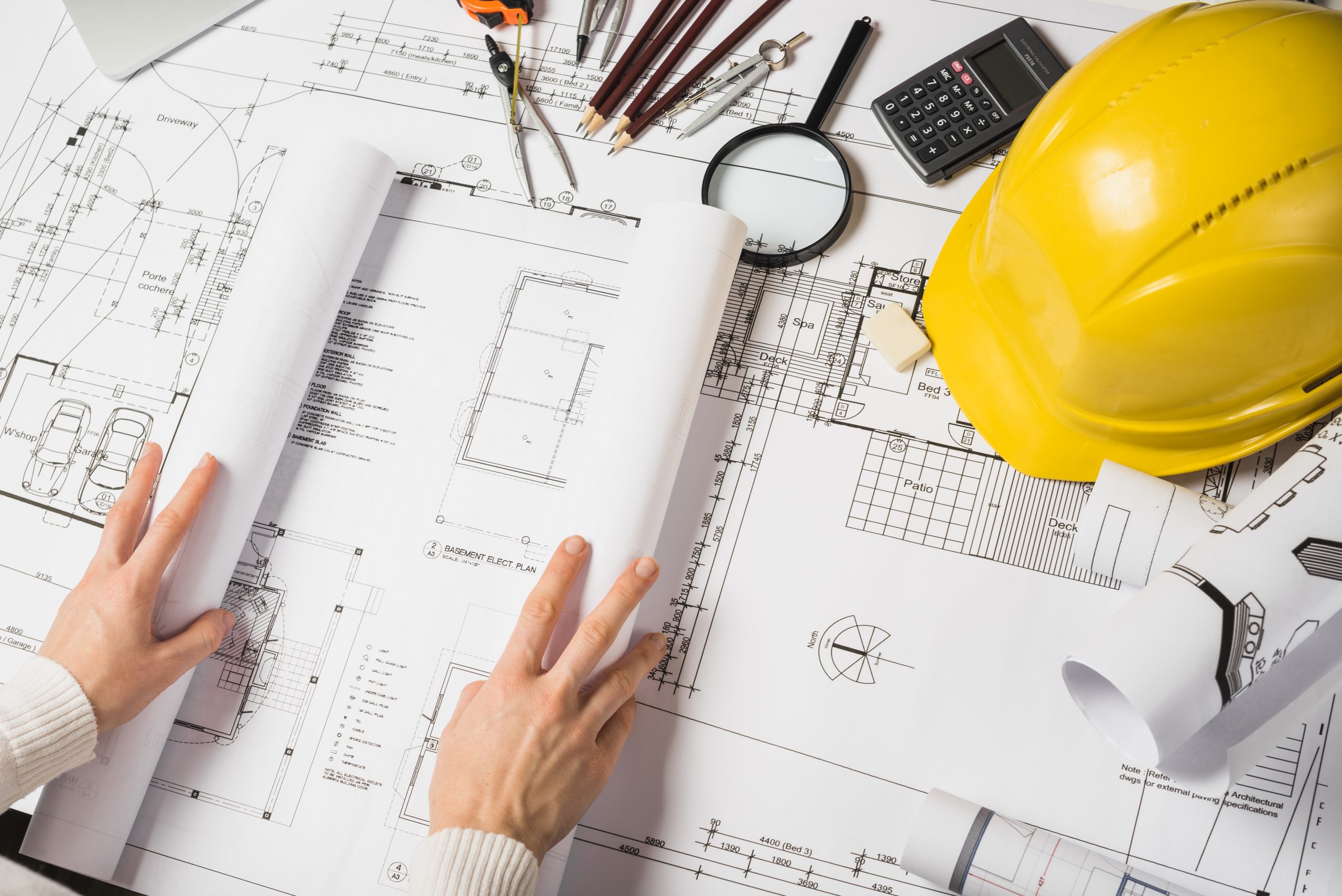Understanding the Diverse Career Paths Available for Aspiring Architect
As an ambitious Architect, you have a world of career paths waiting for you. Whether you're drawn to traditional style or the subtleties of sustainable layout, there's a specific niche that straightens with your passions.
Conventional Architecture: Creating Structures and Structures
Typical style concentrates on developing buildings and structures that mix performance with visual appeal. As you explore this field, you'll appreciate the detailed balance in between kind and objective. You'll learn to draw inspiration from historic designs, including components like symmetry, materials, and craftsmanship. Your layouts can reflect social heritage, showcasing regional traditions while meeting modern needs.
You'll create skills in drafting, model-making, and website analysis, enabling you to imagine and connect your concepts efficiently. Engaging with clients, you'll need to recognize their vision and equate it into feasible designs.
In addition, constructing codes and sustainability methods are essential in your work, ensuring your structures are ecologically friendly and safe. As you expand in your job, you'll discover opportunities in property, business, or perhaps reconstruction jobs, each offering one-of-a-kind obstacles. Welcoming conventional architecture leads the way for a meeting occupation that pays homage to the past while forming the future.
Urban Preparation: Shaping Communities and Public Spaces
As an ambitious Architect, you can play an essential role as a city organizer, transforming exactly how communities connect and operate. By using neighborhood engagement methods, you'll assure that citizens have a voice fit their setting. Plus, integrating sustainable style concepts will certainly assist create spaces that not only satisfy today's demands but likewise secure the future.
Function of Urban Planners
While numerous may assume of engineers as the sole enthusiasts behind buildings, metropolitan coordinators play an important duty in forming the more comprehensive landscape of communities and public areas. They examine land usage, zoning laws, and neighborhood requires to develop sustainable settings that improve lifestyle. By collaborating with numerous stakeholders, you'll help make parks, transportation systems, and suburbs that advertise social communication and ease of access. Urban organizers likewise concentrate on ecological factors to consider, guaranteeing that growths incorporate eco-friendly areas and assistance biodiversity. Your competence in spatial style and area characteristics permits you to envision future growth while protecting cultural heritage. In this vital duty, you'll directly affect just how individuals experience their environments, making every task a possibility for positive change.
Neighborhood Engagement Approaches
Reliable area interaction techniques are vital for metropolitan organizers to assure that the voices of locals are listened to and valued in the planning process. To foster significant discussion, you must prioritize open discussion forums and workshops where area participants can reveal their concepts and issues. Usage studies and social networks to get to a broader target market, guaranteeing varied viewpoints are included. Working together with local companies can enhance count on and promote deeper links. It's crucial to supply clear info concerning decision-making processes and suggested tasks, allowing citizens to really feel educated and empowered. By actively listening and including comments, you'll develop areas that reflect the neighborhood's requirements, inevitably resulting in even more sustainable and successful metropolitan settings. Welcome openness and continual dialogue for long lasting effect.
Sustainable Style Principles
When creating city rooms, integrating sustainable layout principles is important for producing atmospheres that flourish both environmentally and socially. Think about integrating eco-friendly rooms, like parks and yards, to boost biodiversity and enhance air high quality.
Creating with water conservation in mind is also key-- consider rain yards and permeable surface areas to handle stormwater. Involving area members throughout the planning process assurances that the spaces you produce fulfill their requirements and encourage social communication. By accepting these concepts, you'll add to lively, sustainable city landscapes that benefit every person.

Landscape Design: Producing Lasting Exterior Settings
As you discover landscape design, you'll discover essential design concepts that create useful and beautiful exterior areas. Sustainable techniques play an essential duty in making sure these atmospheres flourish while minimizing ecological impact. And also, you'll find a selection of career possibilities that allow you to make an actual difference in exactly how people communicate with nature.
Layout Principles in Landscape
Comprehending style principles in landscape design is essential for producing lasting outdoor environments that balance with nature. You'll require to contemplate aspects like equilibrium, range, and percentage to assure your styles feel cohesive and welcoming. Including native plants not only enhances biodiversity however additionally reduces water usage, making your landscape durable. Consider the circulation of space and exactly how individuals connect with it; pathways and seating areas ought to welcome expedition and leisure. Additionally, focus on seasonal changes, creating with materials that complement the surroundings year-round (Architect). By focusing on sustainability and aesthetics, you can create exterior areas that enhance the community and advertise well-being. Embracing these principles will set a solid structure for your occupation in landscape style.
Sustainable Practices Introduction
Sustainable techniques in landscape style not only concentrate on aesthetics however likewise focus on eco-friendly health and source conservation. You can design areas that promote dirt wellness, such as utilizing organic products and practicing permaculture principles. Ultimately, these methods ensure your layouts profit both individuals and the environment for years to come.
Job Opportunities Expedition
With a strong foundation in sustainable methods, landscape architecture uses a selection of job courses that permit you to make a meaningful influence on the setting. You can function as a landscape developer, developing cosmetically pleasing and practical outside spaces, or concentrate on environmental repair, assisting to revitalize broken ecological communities. Urban planners usually collaborate with landscape architects to produce eco-friendly areas in urban settings, improving city livability. If you're enthusiastic regarding education, consider becoming a landscape style educator, inspiring future generations. Additionally, you could deal with nonprofits concentrated on ecological sustainability or participate in study to innovate brand-new techniques. Each path not just forms lovely atmospheres but also cultivates a much healthier earth for future generations.
Lasting Design: Concentrating On Eco-Friendly Practices
As you explore your occupation in design, embracing eco-friendly methods can establish you apart in a competitive area. Sustainable design concentrates on producing structures that decrease ecological influence while boosting owner health. By integrating sustainable materials, energy-efficient systems, and sustainable building strategies, you'll add to a greener future.
Beginning by getting expertise of eco-friendly certifications like LEED or BREEAM, which can reinforce your credentials. Take into consideration just how all-natural light, ventilation, and special info thermal effectiveness can maximize style. Work together with engineers and ecological consultants to innovate services that reduce waste and conserve resources.
Do not neglect the importance of community participation-- appealing local stakeholders can motivate layouts that harmonize with the environment. As clients progressively focus on sustainability, your expertise in environmentally friendly methods will not only draw in tasks yet additionally accomplish your passion for responsible architecture. Welcome this crucial facet of the career, and see your job thrive.
Historic Preservation: Shielding and Bring Back Social Heritage
While you begin on your building journey, take into consideration the important duty of historical preservation in maintaining our social heritage. This field concentrates on the security and restoration of significant structures, sites, and frameworks that inform the tales of our past. By participating in historic preservation, you'll help guard the architectural heritage that forms neighborhood identity.
As a historical conservation Architect, you'll assess historical significance and examine the problem of frameworks. You'll function very closely with guardians and historians to guarantee authentic remediation strategies are utilized. This job path enables you to blend creative thinking with research study, allowing you to make options that respect original products and craftsmanship.
Your job not only adds to sustainability by reusing existing buildings yet likewise promotes a feeling of satisfaction within neighborhoods. Accepting this path will help you end up being a guardian of background, preserving the stories and aesthetic appeals that enhance our lives.
Inside Design: Enhancing Indoor Spaces
Historic preservation and indoor style both share a commitment to enhancing the constructed setting, but they focus on various facets. While historical preservation highlights preserving a framework's historic and cultural value, indoor style absolutely nos in on optimizing indoor rooms for functionality and aesthetic appeals.
As an ambitious Architect, you'll find that interior design permits you to mix creativity with technical skills. You'll develop rooms that not just look excellent but also promote comfort and effectiveness. This field includes comprehending exactly how light, shade, and materials interact within an area, influencing state of mind and usability.
You'll work on various projects, from domestic homes to industrial offices, ensuring that each environment meets the needs of its residents. By prioritizing user experience, you can change interiors into inspiring and functional rooms, making a substantial effect on just how individuals connect with sites their environments. Accept the chance to improve interior atmospheres and shape the way individuals work and live.
Industrial Layout: Combining Performance With Looks
Commercial layout plays an important duty in developing products that perfectly mix visual appeals with performance, guaranteeing that what you make use of everyday is not only aesthetically attractive however likewise practical. As an ambitious Architect, you can engage on your own in this field, concentrating on creating everything from furnishings to consumer electronic devices. Your job includes recognizing customer requirements, products, and producing procedures, enabling you to develop ingenious solutions that improve everyday experiences.
In industrial style, you'll commonly team up with marketing professionals, makers, and engineers, guaranteeing that your layouts are not just attractive however likewise practical. This profession path offers a vibrant atmosphere where creativity meets usefulness, making it a fulfilling option for designers interested in shaping the items of tomorrow.
Regularly Asked Concerns
What Educational Accreditations Do I Need to Come To Be an Engineer?
To end up being a designer, you'll need a specialist degree in architecture, commonly a Bachelor's or Master's. Furthermore, you'll need to complete a teaching fellowship and pass the Architect Registration Exam to practice legitimately.
Exist Accreditation Requirements for Various Architectural Profession Paths?
Yes, there're certification demands for various architectural courses. Architect. You'll need to pass tests, total internships, and occasionally pursue specialized training, relying on your chosen focus, like landscape style, urban layout, or historic conservation
What Software Abilities Are Crucial for Engineers Today?

Just How Can I Gain Practical Experience While Studying Design?
You can obtain functional experience by interning at architectural companies, joining style competitions, offering for neighborhood tasks, or teaming up with classmates on real-world projects. These possibilities boost your skills and build important connections in the market.
What Task Opportunities Exist Outdoors Standard Architecture Firms?
You can discover different job chances outside traditional design companies, like urban preparation, interior decoration, landscape design, construction administration, realty development, or even roles in sustainability consulting. Each deals unique difficulties and incentives.
Whether you're attracted to traditional design or the subtleties of sustainable design, there's a particular niche that aligns with your rate of interests.When creating city areas, including lasting design principles is vital for creating environments that prosper both environmentally and socially.As you explore landscape architecture, you'll find necessary layout concepts that create lovely and useful outside areas.Comprehending style concepts in landscape design is crucial for developing lasting exterior settings that harmonize with nature.In industrial design, you'll typically work together with online get redirected here marketers, makers, and engineers, ensuring that your layouts are not just lovely however likewise feasible.